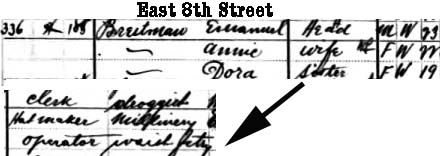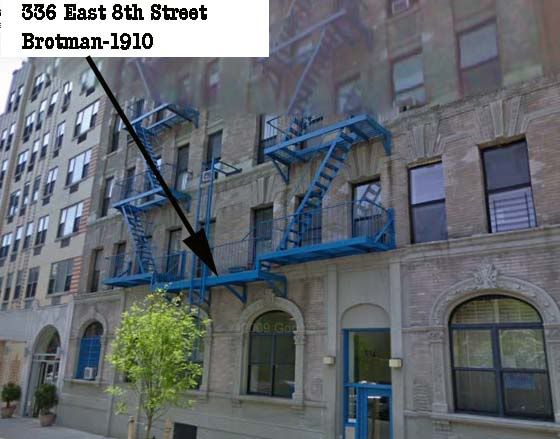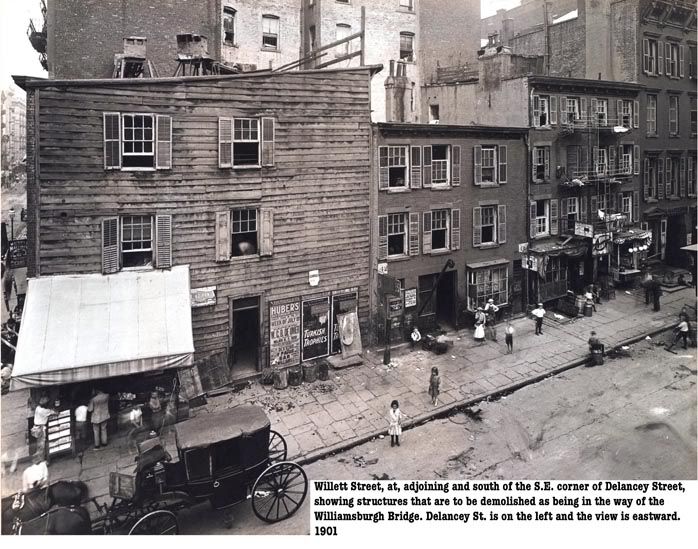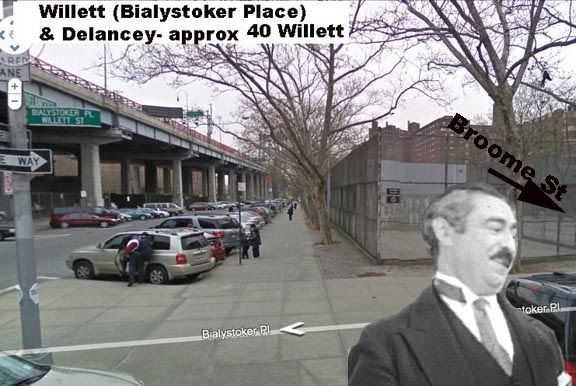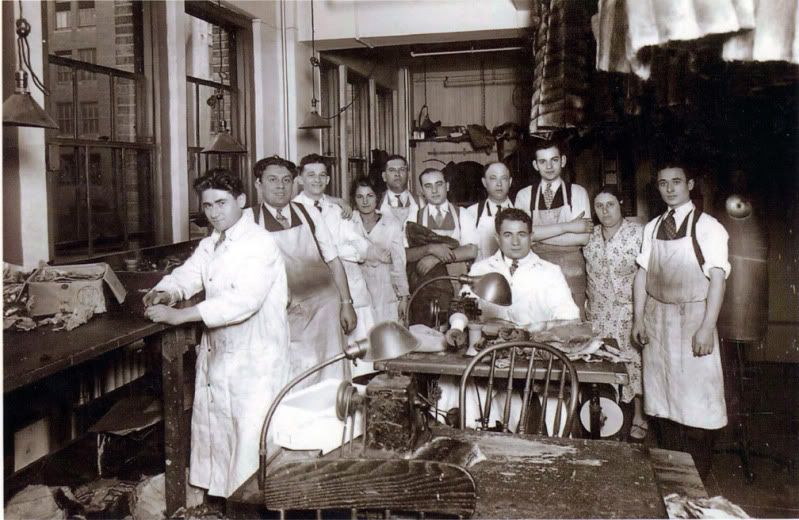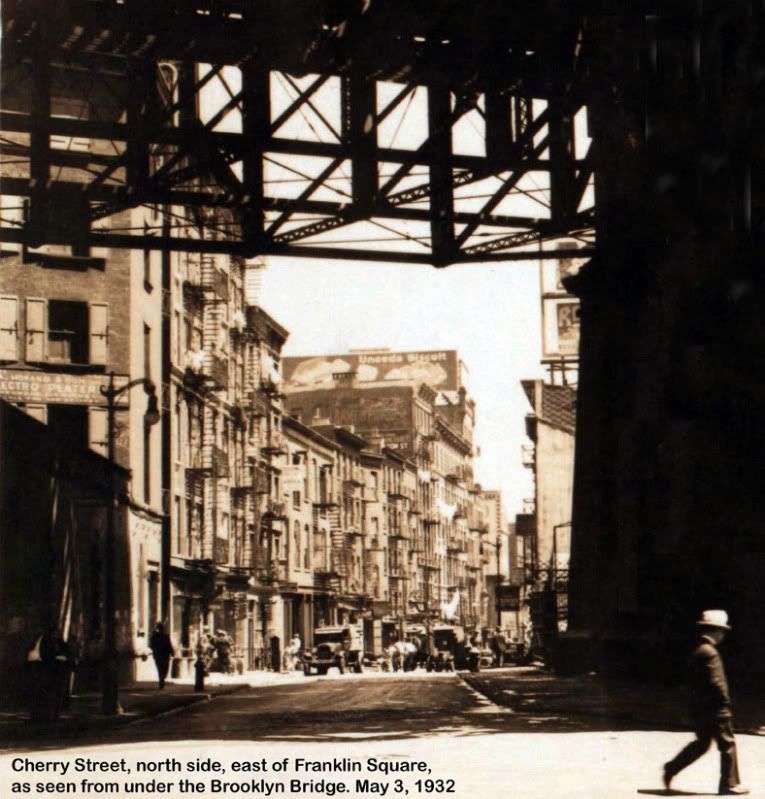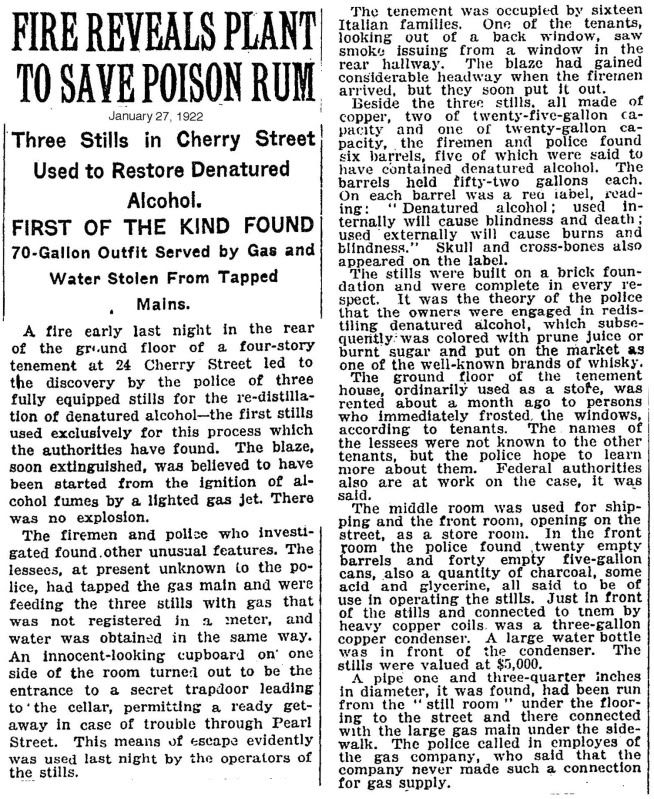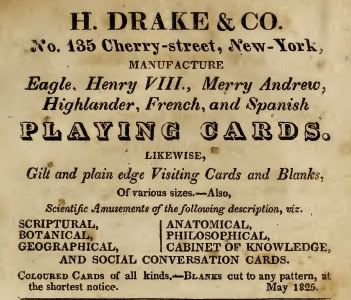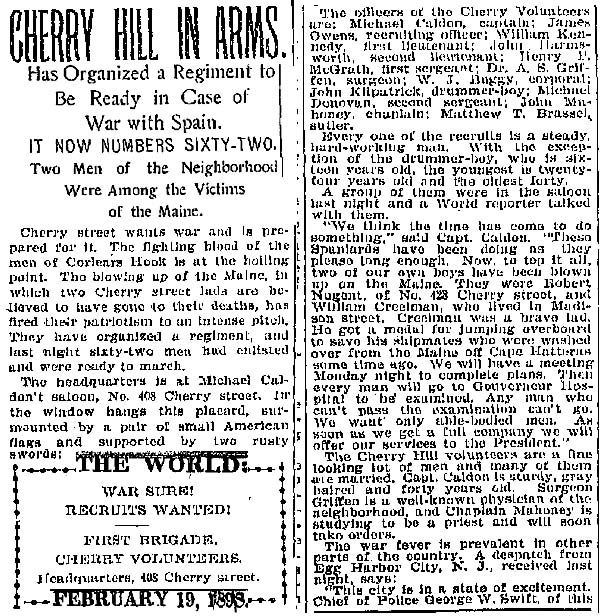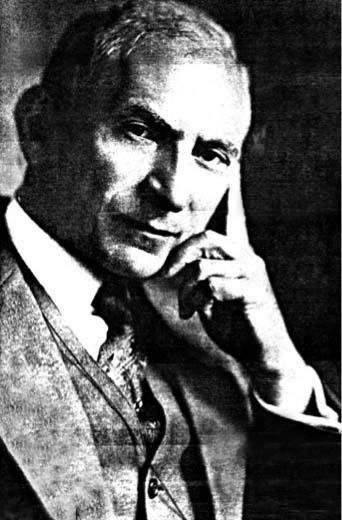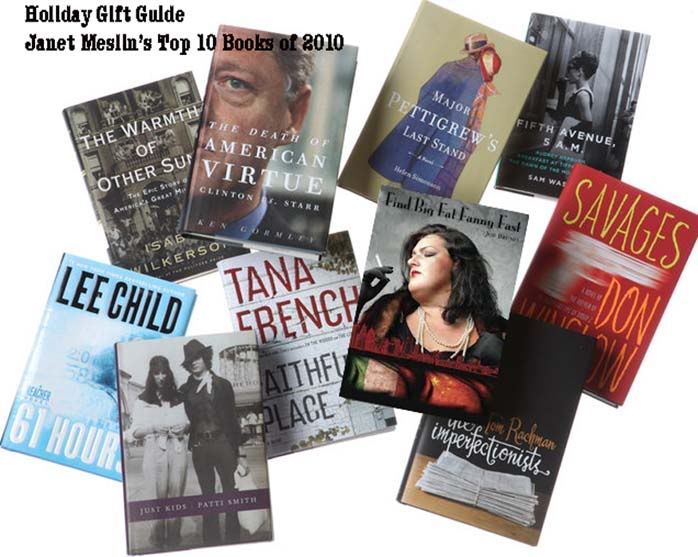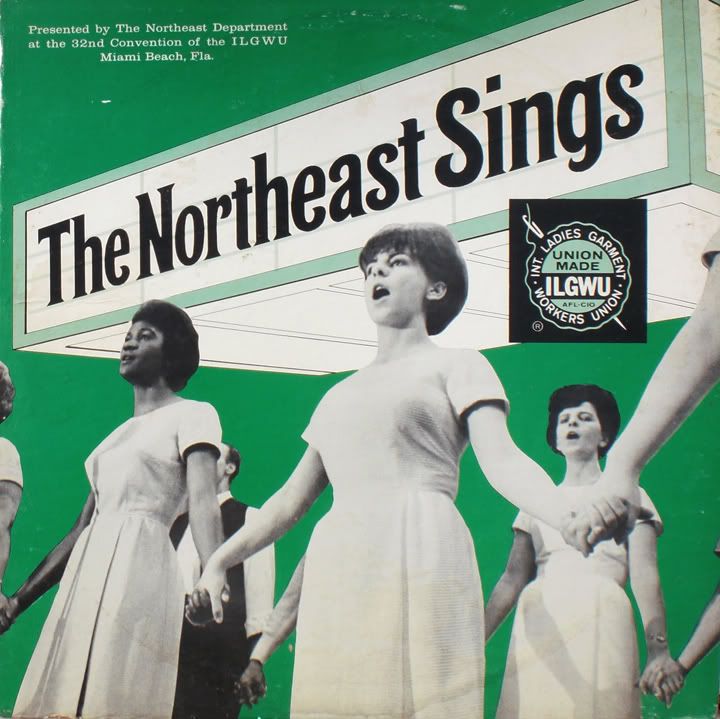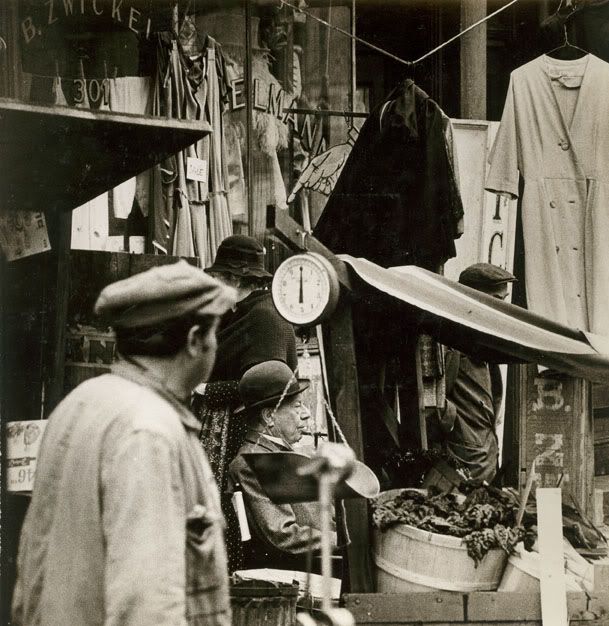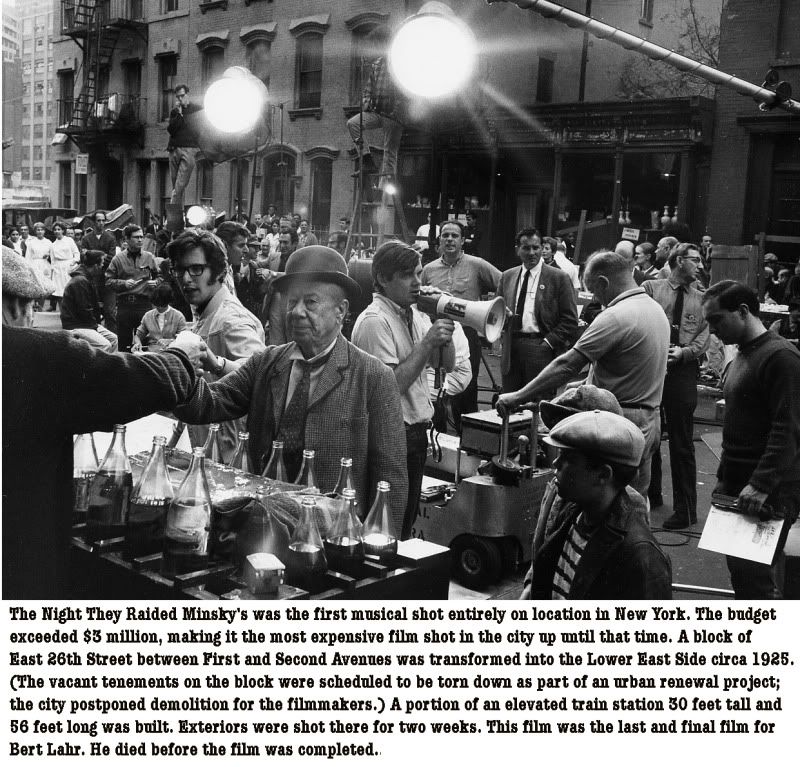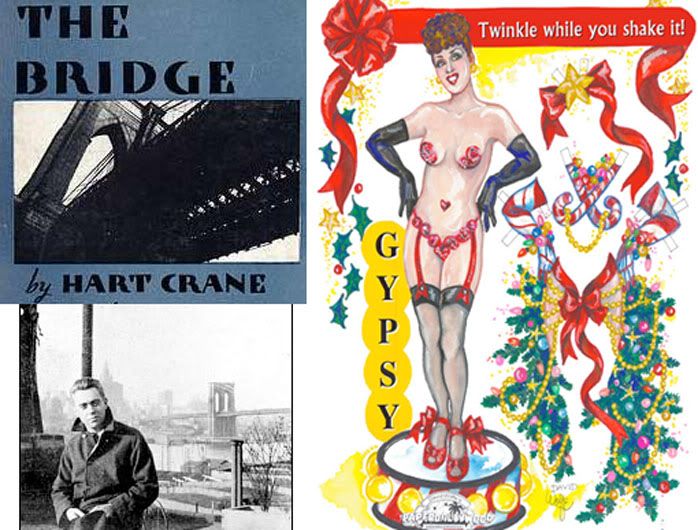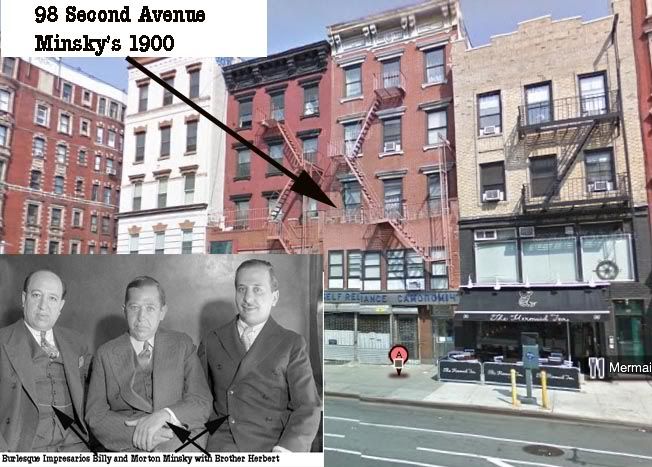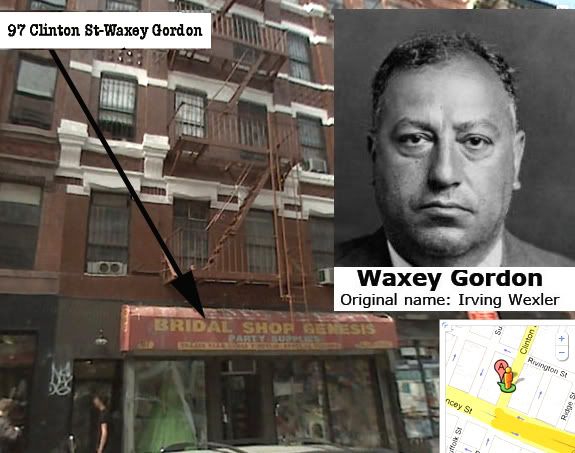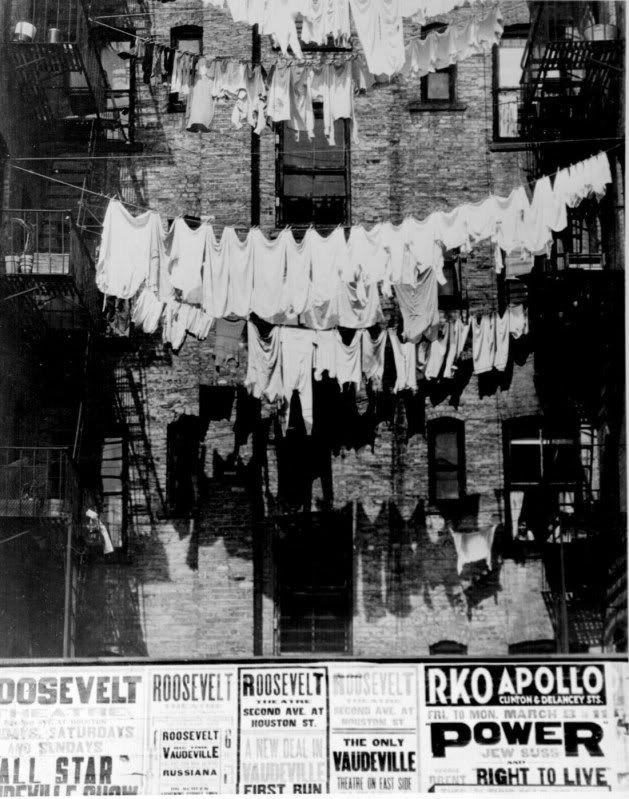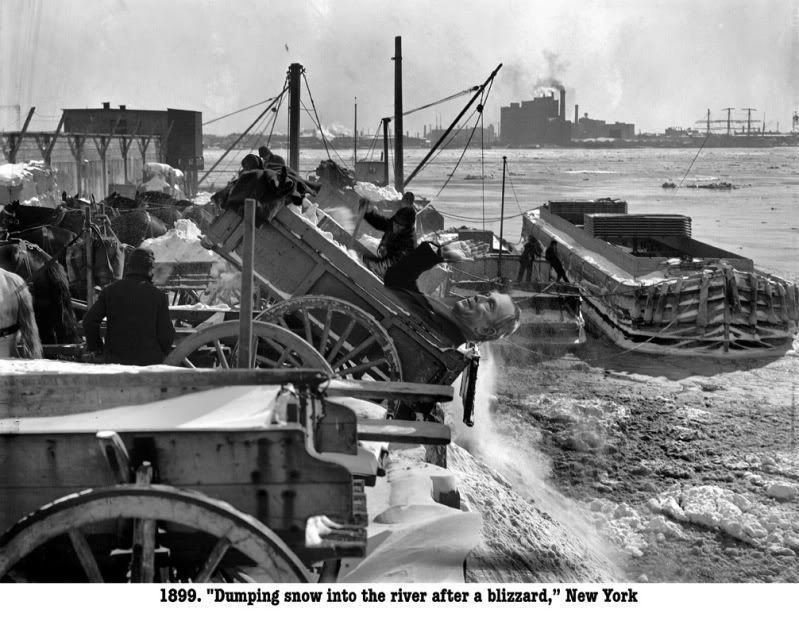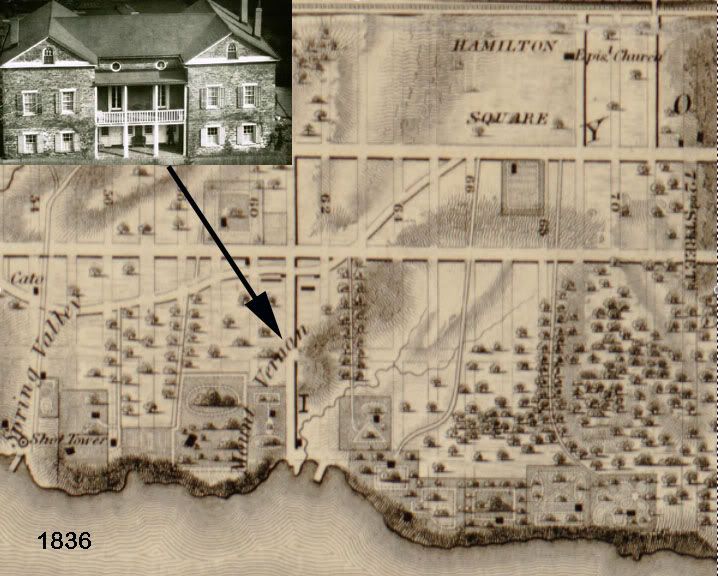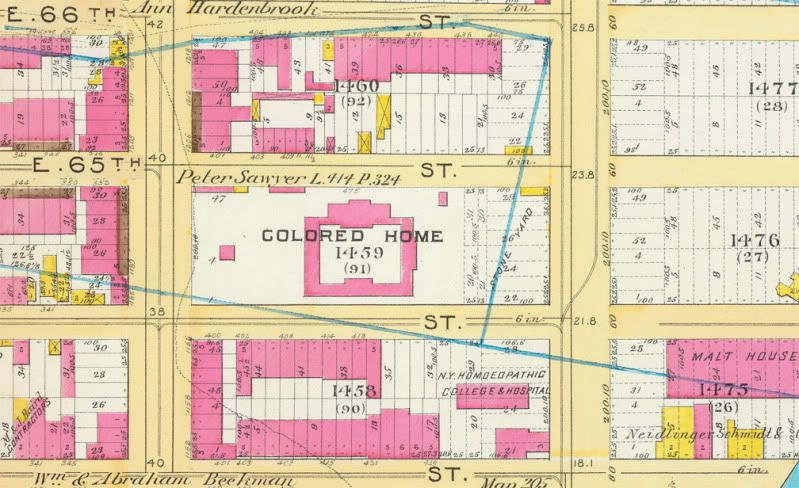Monday, January 31, 2011
Triangle Shirtwaist Commemoration 2010: Suzanne Pred Bass Speaks Of Her Aunts
Video I had uploaded but had forgotten to post here. I'm probably wrong about the Eldridge address. Evidently Rosie was living at 119 St, Marks Place and not 119 E. 8 St.
Kitty O'Neil's Champion Jig
Some info from youtube on this and another version of the song
This interesting piece, being unusual with 7 lines of non-repeated themes, comes from Ryan's Mammoth Collection. In it we hear lots of the "Banjo Licks" common in the tutors. Correct me if I'm wrong, but isn't the last one part of the "Dick Van Dyke" TV show from the 60's?
Love your playing of this tune. I suspect it’s about as historically accurate as any I’ve heard, considering your source and the instrument you play. Well done!
You’re probably already be aware of this, but the tune survives in the current repertoire of Irish traditional musicians under the name of Kitty O'Shea’s. Two notable recorded sources are by Tommy Peoples and Kevin Burke.
Kitty O'Neil, the tune's namesake, was a popular New York-based dancer and singer of the 1870s and '80s.
One such melody is “Kitty O'Neil's Champion Jig,” an elaborate, seven-part fiddler's showpiece that has been revived in recent years by Irish traditional musicians on both sides of the Atlantic. Despite the tune's Irish-sounding name and its adoption into the contemporary Irish repertoire, “Kitty O'Neil's Champion” is actually a hardy survivor from 19th-century American minstrelsy and variety theater.
Kitty O'Neil, the tune's namesake, was a popular New York-based dancer and singer of the 1870s and '80s. The revival of Kitty’s “Champion Jig” hasn't done much to revive her reputation, however, because the tune has become widely known as “Kitty O'Shea,” the title under which it mistakenly appeared on a recording by Donegal fiddle great Tommy Peoples, who started playing the tune in concerts during the 1970s and included it on his 1982 LP The Iron Man.
Kitty O'Neil And Wood's Minstrel Hall
Kitty-O'Neil
In the previous post where the Autobiography of a Thief is viewable the protagonist mentions on p 13 (17) that he had gone to Wood's Minstrel Hall. Kitty O'Neil was a big attraction there. I guess I can see why.
In the previous post where the Autobiography of a Thief is viewable the protagonist mentions on p 13 (17) that he had gone to Wood's Minstrel Hall. Kitty O'Neil was a big attraction there. I guess I can see why.
Sunday, January 30, 2011
Hutchins Hapgood: Autobiography Of A Thief, 1905
from recollection books
above, an interesting account of life in the fourth ward as well as neighboring ones in the late 1800's.
Hutchins Hapgood, journalist and author, was born on May 21, 1869 in Chicago, Illinois.The_autobiography_of_a_thief
Hutchins Hapgood received his early education in the Alton public schools. Like his father and two brothers, he attended Harvard University, receiving the B.A. degree in 1892 and the M.A. in 1897. In the interim he spent two years in study at the universities of Berlin and Freiburg, Germany, reading sociology and philosophy, and also traveled extensively. For a time he was an instructor in English composition at Harvard and the University of Chicago. After trying his hand at various jobs, Hapgood eventually decided to become a journalist like his older brother Norman.
Charles Hutchins Hapgood had a tremendous influence upon the character of his sons. Although not a religious man, he imparted to them a strong moral sense, an abhorrence of great wealth, and a basic belief in progressive socialism. This, coupled with a liberal Harvard education and appropriate connections, led Hutchins Hapgood into the thick of muckraking journalism.
His first newspaper job was with the New York Commercial Advertiser under the tutelage of Lincoln Steffens. Here he met Steffen's assistant, Neith Boyce, whom he married on June 22, 1899.
In 1904 Hapgood became the drama critic for the Chicago Evening Post.
Returning to New York, he later became an editorial writer for the Evening Post, the Press, and the Globe. While maintaining his career as a journalist, Hapgood also wrote books. During the first decade of the twentieth century, he produced the bulk of his major works, including Paul Jones (1901), The Spirit of the Ghetto (1902), The Autobiography of a Thief (1903), The Spirit of Labor (1907), An Anarchist Woman (1909), and Types from City Streets (1910). The anonymously published Story of a Lover (1919), describing the "open" marriage which he and Neith maintained, was initially suppressed as pornographic. Hapgood's last great work was his autobiography, A Victorian in the Modern World (1933).
Hutchins Hapgood was a close friend of Mabel Dodge Luhan and an habitue of her salon at 23 Fifth Avenue. Other close friends included Bernard and Mary Berenson, Jacob Epstein, Max Eastman, Anton Johanson, Walter Lippmann, Robert Morss Lovett, Gertrude and Leo Stein, Alfred Stieglitz, Maurice Sterne, and Mark Sullivan. He and Neith were founding members of the Provincetown Players.
Hapgood's career declined following the death of his eldest child, Boyce, in 1918 and the end of the muckracking era. The last several years of his life he spent with Neith in Key West, Florida, at their home in Provincetown, Massachusetts, and on a farm in Richmond, New Hampshire.
Hutchins Hapgood died on November 19, 1944, in Provincetown, and was buried in the family plot in East Cemetery, Petersham, Massachusetts
above, an interesting account of life in the fourth ward as well as neighboring ones in the late 1800's.
Memories Of The Rag Trade In Save The Tiger, 2
a clip from an excellent movie starring Jack Lemmon and Jack Gilford
from wikipedia
Save the Tiger is a 1973 film about moral conflict in contemporary America. It stars Jack Lemmon, Jack Gilford, Laurie Heineman, William Hansen, Thayer David, Lara Parker and Liv Lindeland. The film is adapted from the novel of the same title by Steve Shagan, (the first book by the author of The Formula and other thrillers, and generally regarded to be his most successful novel by literary standards).
Jack Lemmon plays Harry Stoner, an executive at a Los Angeles apparel company on the edge of ruin. Throughout the film, Stoner struggles with the complexity of modern life versus the simplicity of his youth. He longs for the days when pitchers wound up, jazz filled the air, and the flag was more than a pattern to put on a jock-strap. He wrestles with the guilt of surviving the war and yet losing touch with the ideals for which his friends died. To Harry Stoner, the world has given up on integrity, and threatens to destroy anyone who clings to it. He is caught between watching everything he has worked for evaporate, or becoming another grain of sand in the erosion of the values he once held so dear.
Memories Of The Rag Trade In Save The Tiger
a clip from an excellent movie starring Jack Lemmon and Jack Gilford
from wikipedia
Save the Tiger is a 1973 film about moral conflict in contemporary America. It stars Jack Lemmon, Jack Gilford, Laurie Heineman, William Hansen, Thayer David, Lara Parker and Liv Lindeland. The film is adapted from the novel of the same title by Steve Shagan, (the first book by the author of The Formula and other thrillers, and generally regarded to be his most successful novel by literary standards).
Jack Lemmon plays Harry Stoner, an executive at a Los Angeles apparel company on the edge of ruin. Throughout the film, Stoner struggles with the complexity of modern life versus the simplicity of his youth. He longs for the days when pitchers wound up, jazz filled the air, and the flag was more than a pattern to put on a jock-strap. He wrestles with the guilt of surviving the war and yet losing touch with the ideals for which his friends died. To Harry Stoner, the world has given up on integrity, and threatens to destroy anyone who clings to it. He is caught between watching everything he has worked for evaporate, or becoming another grain of sand in the erosion of the values he once held so dear.
Saturday, January 29, 2011
Delancey and Willett Street: 1901
These houses probably resemble the houses that Louis Sorin may have lived in just down the block on Willett.
Who's Almost Who In Knickerbocker Village History: Louis Sorin
Louis Sorin (1893–1961) was born and died in New York, New York. As a young boy he lived at 6 Willett Street which is about a block and a half south (to the right) of the site above and about a mile from KV. He appeared in 15 films between 1929 and 1961. He was also a prolific theatre actor, notably appearing on Broadway in more than 20 productions between 1923 and 1952.
Sorin is perhaps best known to modern audiences for his performances as Roscoe W. Chandler in The Marx Brothers film "Animal Crackers" (a role he also played onstage), and as Mr. Manicotti in the 1956 Honeymooners episode "Mama Loves Mambo".
Sorin is perhaps best known to modern audiences for his performances as Roscoe W. Chandler in The Marx Brothers film "Animal Crackers" (a role he also played onstage), and as Mr. Manicotti in the 1956 Honeymooners episode "Mama Loves Mambo".
Sunday, January 23, 2011
Bobbi At Work
After my maternal grandfather died in the early 1920's my grandmother, Dora Ferman, went back to work in this factory. She's the woman on the right. Apparently they were furriers. Prior to getting married I found my grandmother listed in the 1910 census as an operator at shirtwaist factory! Bobbi and me in 1949 Bobbi's favorite singer was Aaron Lebedeff
Labels:
bobbi,
dora ferman,
ilgwu,
who's who of grandparents
1817 Map Of The Fourth Ward Area
This shows the area when there was a playing card manufacturer at 135 Cherry Street. Note in 1817 Monroe Street was Lombardy St, Madison Street was Bancker, East Broadway was Harmon Street and a part of Oliver was named Fayette Street.
In the 1820's, At 135 Cherry Street
This address is around where Cherry meets Market Street.
from wikipedia
from wikipedia
There are theories about whom the court cards represent. For example, the Queen of Hearts is believed by some to be a representation of Elizabeth of York—the Queen consort of King Henry VII of England, or it is sometimes believed to be a representation of Anne Boleyn, the second wife of Henry VIII. The United States Playing Card Company suggests that, in the past, the King of Hearts was Charlemagne, the King of Diamonds was Julius Caesar, the King of Clubs was Alexander the Great, and the King of Spades was the Biblical King David (see King (playing card)). However, the Kings, Queens, and Jacks of standard Anglo-American cards today do not represent anyone in particular. They stem from designs produced in Rouen before 1516, and, by 1540–67, these Rouen designs show well executed pictures in the court cards with the typical court costumes of the time. In these early cards, the Jack of Spades, Jack of Hearts, and King of Diamonds are shown from the rear, with their heads turned back over the shoulder so that they are seen in profile; however, the Rouen cards were so badly copied in England that the current designs are gross distortions of the originals.
Saturday, January 22, 2011
Katharine Weber: Fine and Dandy
From 1/29/07, but now with a better size video: I went to hear author Katharine Weber speak about her new book "Triangle" at the East End Temple. It was excellent, but an unexpected surprise was finding out that Katharine Weber is Kay Swift's granddaughter! Swift was an accomplished musician and composer as well as a musical historian. Many folks know her as George Gershwin's main squeeze. Here's a musical review of the event.
Kay Swift composed Fine And Dandy. The lyrics were written by her first husband, James Warburg
Please forgive this platitude
But I like your attitude
You are just the kind i've had in mind
And never could find
Honey, I'm so keen on you
I could come to lean on you
On a random bay
Give you your way
Do what you say
Gee, it's all fine and dandy
Sugar candy,
When I've got you
Then I only see the sunny side
Even trouble has its funny side
When you're gone, my sugar candy
I get so lonesome, i get so blue
But when you're handy
It's fine and dandy
But when you're gone
What can I do?
George Rutgers' House: 329 Cherry Street Historic Home
329-cherry-house
Currently this is where the former PS 137, now known as PS 184, is situated.
Currently this is where the former PS 137, now known as PS 184, is situated.
William Creelman: Spanish American War Medal Of Honor Winner
as well as possible one time Cherry Hill and Ward 17 inhabitant. He definitely lived at the address below around the time the house was first built.
Friday, January 21, 2011
Cherry Hill Casualities In The Sinking Of The Maine
The headquarters for volunteers to sign up was at Michael Caldon's saloon at 408 Cherry Street. This was near the old Gouverneur Hospital. According to the article the two sailors who lost their lives were Robert Nugent of 428 Cherry Street and William Creelman of Madison Street. The problem is that Creelman didn't die. Also the 408 Cherry Street address is not really considered Cherry Hill, but rather in the Corlear's Hook, 7th Ward, area of the LES
About William Creelman:
About William Creelman:
William James Creelman (August 3, 1874 – March 24, 1928) was a United States Navy sailor and a recipient of the United States military's highest decoration, the Medal of Honor. He was awarded the medal for jumping overboard during an 1897 winter storm in an unsuccessful attempt to rescue a shipmate from drowning. Creelman went on to become a commissioned officer before leaving the Navy.
Born on August 3, 1874, in Brooklyn, New York, Creelman joined the Navy from that state. By February 1897, he was serving as a landsman on the USS Maine.
On the morning of February 4, Maine set out from Hampton Roads, Virginia, for Charleston, South Carolina, as part of the six-ship "White Squadron". Later that evening a strong storm developed which lasted for several days. Early on February 6, a large wave broke over the deck of the ship and washed away two sailors, Apprentice Leonard C. Kogel and Gunner's Mate Charles Hassel. After a lifebuoy was thrown to Hassel, Creelman jumped overboard into the rough seas and swam towards Kogel, but was unable to reach the apprentice before he sank beneath the waves. He than swam to Hassel and the two men clung to the lifebuoy as they were swept out of sight of Maine. Meanwhile, the ship's sailors put out a lifeboat which was quickly disabled after its steering oar was broken by the heavy waves. As Maine maneuvered to pick up the lifeboat and its crew, two more men were washed overboard and drowned. It was three and a half hours before the seas were calm enough for Maine to locate and take aboard Creelman and Hassel, still holding onto the lifebuoy and near exhaustion.For this action, Creelman was awarded the Medal of Honor.
Creelman's official Medal of Honor citation reads:
Attached to the U.S.S. Maine, February 1897. Distinguishing himself, Creelman showed extraordinary heroism in the line of his profession during an attempt to save life at sea.
Creelman reached the commissioned officer rank of lieutenant before leaving the Navy. He died on March 24, 1928, at age 53 and was buried at Calvary Cemetery in New York City.
Tuesday, January 18, 2011
Max Steuer's Treasures
steuer-life
More on his les roots from steuer genealogy site. The family lived for a time in the 7th Ward on Columbia Street. Aaron was Max's father
More on his les roots from steuer genealogy site. The family lived for a time in the 7th Ward on Columbia Street. Aaron was Max's father
Notes for AARON STEUER:
Aaron & Dinah Steuer arrived in New York, USA, along with their son Max D., in 1876. Their immigration was preceeded by Julius Steuer and his family, who settled in Cleveland, Ohio. Aaron didn't seek them out. Aaron worked in New York's Lower East Side and lived on Columbia Street. In his European days, Aaron was a vintor in Bohemia. The making of wine was a crown monopoly in Bohemia. He was an employee of Franz Joseph.
Monday, January 17, 2011
Max Steuer: Defense Lawyer At The Triangle Shirtwaist Trial
Steuer was born on September 16, 1870 (or 1871), in the town of Homino, then in Austria-Hungary (later Czechoslovakia). In 1876 he arrived in the United States with his father and mother. He attended the City College of New York from 1886 to 1889. He received his law degree from Columbia University in 1893 and was admitted to the New York state bar the same year.from a Steuer family history site
Steuer married Bertha Popkin in 1897. The couple had three children: Aron, Ethel and Constance.
Steuer was active in Tammany Hall for many years, especially during the leadership of John F. Curry in the late 1920s and early 1930s. In 1938 he served as a delegate to the New York state constitutional convention.
Max Steuer died in Jackson, New Hampshire, on August 21, 1940.
While still in his twenties, Steuer earned a reputation as an effective advocate. He is best known for his trial work. Steuer represented some plaintiffs and in some cases was a prosecutor, but he made his name as counsel for the defense.
His first trial that gave him a national reputation was the defense of actor Raymond Hitchcock in 1908.
Steuer is best known today for his successful defense of the factory owners after the Triangle Shirtwaist Factory Fire. In March 1911 a fire broke out on the eighth floor of the factory, and quickly spread to the ninth and tenth floors. The escape routes were locked or overcome by the fire. One hundred forty-six women, adolescent girls, and men lost their lives. Steuer defended the owners, Max Blanck and Isaac Harris, against criminal charges arising from the fire and its circumstances. The two were acquitted. The acquittal is attributed to Steuer's cross-examination and impeachment of one of the surviving employees.
Steuer won acquittals in numerous cases which were notable at the time. Defendants who were acquitted included sports promoter Tex Rickard, banker Charles E. Mitchell and former Attorney General Harry Daugherty. Steuer, though a skillful litigator, also saw clients convicted, such as Maurice E. Connolly, or saw the loss of divorce cases, as the one for W.E.D. Stokes.
Working for the employers, Steuer negotiated the first significant collective bargaining agreements in the women's clothing industry.
Working as a prosecutor, Steuer won convictions against Barnard K. Marcus and Saul Singer for their roles in the failed Bank of United States.
Steuer focused on his many individual clients and left behind no philosophy and no writing such as a book or law review article. His lasting influence lies in his legendary ability to question witnesses. His son Aron Steuer, a New York state court judge, compiled a book about his father's career that consisted entirely of excerpts from Max Steuer's cross-examination of witnesses. Steuer's lesson to the lawyers who followed him was to see each case as a whole and to watch for testimony that runs counter to human experience.
Degree: 1893, Graduated with honors, L.L. Columbia LawI was able to figure out that his probable address in 1880 was 297 East 3rd Street.
Education: College of the City of New York
Elected: 11/1929, City Court Bench
Elected 2: Supreme Court
Graduation: 1885, as first honor student, Public School 15
Residence: 1897, 124 East 60th, New York City, New York, USA
In 1902 it was 129 West 121st Street.
Sunday, January 16, 2011
A Shout Out To The KV Palumbos
from the December 5th nypost Rumble
Bobby the battlerSeen in the middle of above pic is John, playing Lucio, a mobster's son under investigation by detectives played by Christopher Meloni and Mariska Hargitay in an episode of Law and Order: Special Victims Unit.
The Rumble wishes a speedy recovery to Bobby Palumbo, former president of OTB and current NYRA official who is on the mend from a heart attack and triple-bypass surgery around the Thanksgiving holiday. Palumbo, 70, still lives in Knickerbocker Village in the shadows of the old New York Post newsroom on South Street. His son, John, former Knicks ballboy turned actor, recently completed shooting “Sweet Lorraine” with Tatum O’Neal.
Thursday, January 13, 2011
The ILGWU: August 1, 1938
Life Ilgwu 1938
Displayed at the Grey Art Gallery in remembrance of the Triangle Shirtwaist Fire 100th anniversary. I was curious to find out whether Yetta Henner was still alive. I assumed she married Hy Stofsky, her boyfriend in the article. Sadly, a Yetta Stofsky passed away in 1995 in Florida at the same age Yetta Henner would have been. Living where she did on Rivington Street her family may have known the Greenglass family from around the corner. She was around the same age as Ethel.
Displayed at the Grey Art Gallery in remembrance of the Triangle Shirtwaist Fire 100th anniversary. I was curious to find out whether Yetta Henner was still alive. I assumed she married Hy Stofsky, her boyfriend in the article. Sadly, a Yetta Stofsky passed away in 1995 in Florida at the same age Yetta Henner would have been. Living where she did on Rivington Street her family may have known the Greenglass family from around the corner. She was around the same age as Ethel.
Labels:
ilgwu,
rosenbergs,
triangle shirtwaist factory fire
Imagine My Surprise..
When I found Joe Bruno's Find Big Fat Fanny Fast on Janet Meslin's top ten book list of 2010. KV is proud.
Tuesday, January 11, 2011
Blame It On Joe Bruno
Of course we're not referring to KV's Joe Bruno. But I'm sure he can be blamed for other things
Sunday, January 9, 2011
Molly Picon: Not Quite The LES
Molly Picon (Yiddish:מאָלי פּיקאָן) (June 1, 1898–April 5, 1992) was an American star of stage, screen and television, as well as a lyricist. She was first and foremost a star in Yiddish theatre and Film, but as Yiddish theatre faded she began to perform in English-language productions.
Picon was born Małka (Margaret) Opiekun in New York City to Clara and Louis (or Denis) Opiekun (later changed to Picon). Her career began at the age of six in the Yiddish Theatre. In 1912, she debuted at the Arch Street Theatre in New York and became a star of the Second Avenue Yiddish stage.
Opiekun is a Polish language name meaning, "guardian" or "caretaker".
Picon was so popular in the 1920s that many shows had the name Molly in their title. In 1931 she opened the Molly Picon Theatre. She appeared in many films, starting with silent movies. Her earliest film still existing is East and West which deals with the clash of new and old Jewish cultures. Molly plays an American-born daughter who travels with her father back to Galicia in East Central Europe. Real-life husband Jacob Kalich plays one of her Galician relatives from Eastern Europe.
Picon's most famous film, Yidl Mit'n Fidl (1936), was made on location in Poland, and has her wearing male clothing through most of the film. In the film, a girl and her father are forced by poverty to set out on the road as traveling musicians. For her safety, she disguises herself as a boy, which becomes inconvenient when she falls in love with one of the other musicians in the troupe.
Picon made her English language debut on stage in 1940. On Broadway, she starred in Neil Simon's Come Blow Your Horn and the Jerry Herman musical Milk and Honey, both in 1961. In 1966 she quit the disastrous Chu Chem during previews in Philadelphia; the show closed before reaching Broadway.
Her first English speaking role in the movies was the film version of Come Blow Your Horn (1963), and she portrayed Yente, the Matchmaker in the film adaptation of the Broadway hit Fiddler on the Roof in 1971.
In the 1970s, she was featured as a madame named Mrs. Cherry in For Pete's Sake, a film starring another famous Jewish-American actress, Barbra Streisand. She later played a role on television on the soap opera Somerset.
ILGWU Anthem
This comes from a 1965 performance at the 32nd Convention of the ILGWU.
A reference to this anthem is made in Rose Pesotta's Bread Upon The Waters
Bert Lahr: The Night They Raided Minskys
Bert Lahr (August 13, 1895 – December 4, 1967) was an American Tony Award-winning comic actor.
Born Irving Lahrheim in New York City, Lahr is best remembered today for his role as the Cowardly Lion and the Kansas farm worker Zeke in the classic 1939 movie The Wizard of Oz, but known during his life for a career in burlesque, vaudeville and Broadway.
Dropping out of school at the age of fifteen to join a juvenile vaudeville act, Lahr worked his way up to top billing on the Columbia Burlesque Circuit. In 1927 he debuted in on Broadway in Harry Delmar's Revels. Lahr played to packed houses, performing classic routines such as "The Song of the Woodman" (which he later reprised in the film Merry-Go-Round of 1938). Lahr had his first major success in a stage musical playing the prize fighter hero of Hold Everything (1928-29). Several other musicals followed, notably Flying High (1930), Florenz Ziegfeld's Hot-Cha! (1932) and The Show Is On (1936) in which he co-starred with Beatrice Lillie. In 1939, he co-starred with Ethel Merman in DuBarry Was a Lady.
Lahr made his feature film debut in 1931's Flying High, playing the part of the oddball aviator he had previously played on stage. He signed with New York-based Educational Pictures for a series of two-reel comedies. When that series ended, he came back to Hollywood to work in feature films. Aside from The Wizard of Oz (1939), his movie career was limited.
Saturday, January 8, 2011
National Winter Garden
The Bridge, first published in 1930 by the Black Sun Press, is Hart Crane's first, and only, attempt at an American long poem. (Its primary status as either an epic or a series of lyrical poems remains contested; recent criticism tends to read it as a hybrid, perhaps indicative of a new genre, the 'modernist epic.'
The Bridge was inspired by New York City's "poetry landmark", the Brooklyn Bridge. Crane lived for some time at 110 Columbia Heights in Brooklyn, where he had an excellent view of the bridge; only after The Bridge was finished did Crane learn that one of its key builders, Washington Roebling, had once lived at the same address.
The Bridge comprises 15 short poems, here's one of them. It's inspiration was mentioned previously:
About Hart Crane
The Bridge was inspired by New York City's "poetry landmark", the Brooklyn Bridge. Crane lived for some time at 110 Columbia Heights in Brooklyn, where he had an excellent view of the bridge; only after The Bridge was finished did Crane learn that one of its key builders, Washington Roebling, had once lived at the same address.
The Bridge comprises 15 short poems, here's one of them. It's inspiration was mentioned previously:
NATIONAL WINTER GARDEN.
by Hart Crane
Outspoken buttocks in pink beads
Invite the necessary cloudy clinch
Of bandy eyes. . . . No extra muffling here:
The world’s one flagrant, sweating cinch.
And while legs waken salads in the brain
You pick your blonde out neatly through the smoke.
Always you wait for someone else though, always–
(Then rush the nearest exit through the smoke).
Always and last, before the final ring
When all the fireworks blare, begins
A tom-tom scrimmage with a somewhere violin,
Some cheapest echo of them all–begins.
And shall we call her whiter than the snow?
Sprayed first with ruby, then with emerald sheen–
Least tearful and least glad (who knew her smile?)
A caught slide shows her sandstone grey between.
Her eyes exist in swivellings of her teats,
Pearls whip her hips, a drench of whirling strands.
Her silly snake rings begin to mount, surmount
Each other–turquoise fakes on tinselled hands.
We wait that writhing pool, her pearls collapsed,
–All but her belly buried in the floor;
And the lewd trounce of a final muted beat!
We flee her spasm through a fleshless door. . . .
Yet, to the empty trapeze of your flesh,
O Magdalene, each comes back to die alone.
Then you, the burlesque of our lust–and faith,
Lug us back lifeward–bone by infant bone
About Hart Crane
Hart Crane (1899-1932) was an American poet. Finding both inspiration and provocation in the poetry of T. S. Eliot (Crane’s The Bridge was allegedly written directly in response to Eliot’s The Wasteland), Crane wrote poetry that was traditional in form, difficult and often archaic in language, and which sought to express something more than the ironic despair that Crane found in Eliot’s poetry. Though frequently condemned as being difficult beyond comprehension, Crane has proved in the long run to be one of the most influential poets of his generation.
Crane was gay, and, much like his contemporaries (and a significant number of poets and artists throughout the ages), suffered from depression and a drinking problem. Although he experienced some success as a writer in the early and mid 1920′s, his depression and drinking won out, as did his belief that one could not be happy as a homosexual, and in 1932 he committed suicide by jumping off a steamship into the Gulf of Mexico.
The Night They Raided Minskys
cont'd from previous post
Billy realized that while burlesque could not be classy, it could be presented in classy surroundings. In 1931 he proposed bringing the Minsky brand to Broadway, amid the respectable shows. The brothers leased the Republic Theater on 42nd Street and staged their first show on February 12. The Republic became Minsky's flagship theater and the capital of burlesque in the United States. (The theater is now called the New Victory and, ironically, specializes in children's entertainment.) Other burlesque shows were inspired to open on 42nd Street at the nearby Eltinge and Apollo Theaters.
The Great Depression ushered in the greatest era for burlesque, and Minsky burlesque in particular. Few could afford to attend expensive Broadway shows, yet people craved entertainment. Furthermore, there now seemed to be an unlimited supply of unemployed pretty girls who considered the steady work offered by burlesque. By the time they finished expanding, the various Minskys controlled over a dozen theaters – six in New York and others in Baltimore, Philadelphia, Albany, and Pittsburgh. They even formed their own "wheel."
Minsky's featured comics Phil Silvers, Joey Faye, Rags Ragland and Abbott and Costello, as well as stripper Gypsy Rose Lee. Others included, Red Buttons and Robert Alda, as well as strippers, Georgia Sothern, Ann Corio, Margie Hart, and Sherry Britton. These women, who began stripping in their teens, made between $700 and $2,000 a week.
With burlesque thriving in New York (there were now 14 burlesque theaters, including Minsky's rivals), competition was fierce. Each year, various license commissioners issued restrictions to keep burlesque from pushing the limits. But convictions were rare, so theater managers saw no need to tone down their shows.
In 1935, irate citizens' groups began calling for action against burlesque. Fiorello H. LaGuardia, had deemed them a "corrupting moral influence". The city's license commissioner, Paul Moss, tried to revoke Minsky's license but the State Court of Appeals ruled that he did not have grounds without a criminal conviction. Finally, in April, 1937, a stripper at Abe Minsky's New Gotham Theater in Harlem was spotted working without a G-string. The ensuing raid led to the demise not only of Minsky burlesque, but of all burlesque in New York. The conviction allowed Moss to revoke Abe's license and refuse to renew all of the other burlesque licenses in New York.
After several appeals, the Minskys and their rivals were allowed to reopen only if they adhered to new rules that forbade strippers. The owners went along, hoping to stay in business until the November election when reformist mayor Fiorello La Guardia might be voted out. But business under the new code was so bad that many New York burlesque theaters closed their doors for good. By the time La Guardia was re-elected, the word "burlesque" had been banned and, soon after, the Minsky name itself, since the two were synonymous. With that final blow, burlesque and the Minskys were finished in New York.
Of all the Minskys, only Harold, Abe's adopted son, remained active in burlesque. Harold started in the business at age nineteen at the height of the Great Depression, learning the business by working in all facets from the box office to theater management. By his early twenties Harold had already produced shows.
In 1956 Harold brought the Minsky name to a Las Vegas revue at the Dunes, where it could exist without apology. That revue ran for six years; subsequently, he moved Minsky productions into other landmark casinos such as the Silver Slipper, the Thunderbird, and The Aladdin.
Harold resided in Las Vegas until his death in 1977.
The Minsky Family
When they got rich the Minsky family moved uptown to 97th Street, near 5th Avenue.
Minsky's Burlesque refers to the brand of burlesque presented by the four Minsky brothers: Abe Minsky (1878–1960); Billy Minsky (1887–1932); Herbert Minsky (1892-?); and Morton Minsky (1902–1987).They started in 1912 and ended in 1937 in New York City. Although the shows were declared obscene and outlawed, they were rather tame by modern standards.
The eldest brother, Abe, launched the business in 1908 with a Lower East Side nickelodeon showing racy films. His own father shut him down and bought the National Winter Garden on Houston Street, which had a theater inconveniently located on the sixth floor. He gave the theater to Abe and his brothers Billy and Herbert. At first they tried showing respectable films but could not compete with the large theater chains. The Minskys tried to bolster their shows by bringing in vaudeville performers, but could not afford good acts.
Then they considered burlesque. Burlesque acts were cheaper, and circuits (called "wheels") supplied a new show every week, complete with cast, costumes and scenery. There was the Columbia Wheel, the American Wheel, and the Mutual Wheel. Burlesque during this period was "clean"; a fourth wheel, the Independent, actually went bankrupt in 1916 after refusing to clean up its act. The Minskys briefly considered signing with a wheel but decided to stage their own shows because it was cheaper and Billy longed to be the next Florenz Ziegfeld.
But Minsky's clientèle of poor immigrants had not been taught to appreciate clean burlesque, and the Minskys were not about to teach them. Plus, their audience needed a compelling reason to trek up to a sixth-floor theater. Billy realized that success in burlesque depended on how the girls were featured. Abe, who had been to Paris and the Folies Bergère and Moulin Rouge, suggested importing one of their trademarks: a runway to bring the girls out into the audience. The theater was reconfigured, and the Minskys were the first to feature a runway in the United States. Billy had the sign out front changed to "Burlesque As You Like It – Not a Family Show," and the Minskys were on their way.
The Minskys were raided for the first time in 1917 when Mae Dix absent-mindedly began removing her costume before she reached the wings. When the crowd cheered, Dix returned to the stage to continue removing her clothing to wild applause. Billy ordered the "accident" repeated every night. This began an endless cycle: to keep their license, the Minskys had to keep their shows clean, but to keep drawing customers they had to be risqué. Whenever they went too far, they were raided.
Morton joined the company in 1924, after graduating from New York University, and worked at the Little Apollo Theater on 125th Street. There was a raid during the very first show. For the next four years, the theater showed a weekly profit of $20,000 after payola.
Billy's attempt, however, to present classy burlesque at the Park Theater on Columbus Circle failed miserably.
Another famous raid occurred in April, 1925, and inspired the book and film The Night They Raided Minsky's. By this time it was permissible for girls in shows staged by Ziegfeld, George White and Earl Carroll – as well as burlesque – to appear topless as long as they did not move (a similar rule in London burlesque was famously demonstrated in the film Mrs. Henderson Presents). In a show at the National Winter Garden, Madamoiselle Fifi (née Mary Dawson from Pennsylvania) stripped to the waist and then moved.
Occasionally a raid was triggered by the comedy material, but filthy comics did not last long because they were a liability to the management.
Business boomed during Prohibition and the National Winter Garden's notoriety grew. Regular patrons included John Dos Passos, Robert Benchley, George Jean Nathan, Condé Nast, and Hart Crane (see Crane's poem "National Winter Garden" in The Bridge).
Gypsy Rose Lee's Lower East Side Gangster Boy Friend
Waxey lived on Clinton Street several years before this occured. Prohibition changed things considerably. About Gypsy and Waxey from Karen Abbott's new biography
In 1931, when Waxey met Gypsy Rose Lee in a Manhattan speakeasy, he was 43 years old and married, with three children. He kept his family in a ten-room, four-bath apartment at 590 West End Avenue (paying $6,000 per year in rent at a time the average annual salary was $1,850) and decorated with the help of professionals, including a woodsmith who custom-built a $2,200 bookcase. Five servants catered to their every whim. His children attended private schools, took daily horseback riding lessons in Central Park, and spent summers at their house in Bradley Beach, NJ. He owned three cars, bought $10 pairs of underwear by the dozen, and stocked his closets with $225 suits tailor-made for him by the same haberdasher who outfitted Al Capone. In 1930, Waxey made nearly $1.5 million and paid the United States government just $10.76 in taxes.
Gypsy was just 20 years old at the time and worried obsessively about money—“Everything’s going out,” her mother, Rose, warned her daily, “and nothing’s coming in.” She had just scored her first big break in burlesque, working as a headliner for Minsky’s Republic on Broadway, but the days of starving on the old vaudeville circuit, eating dog food just to stay alive, were still fresh in her mind
Gypsy Rose Lee: 1943
This is footage of the legendary Gypsy Rose Lee performing an abbreviated (and very clean) version of her famous routine, "The Psychology of a Stripteaser" in the 1943 film Stage Door Canteen.
Gypsy Rose Lee On The Lower East Side
The ads for burlesque are for the Roosevelt Theater/aka National Winter Garden, at nearby Houston Street. Here's a previous post showing that theater. Gypsy performed there when it was run by the Minsky's
Gypsy Rose Lee (January 8, 1911 – April 26, 1970) was an American burlesque entertainer, famous for her striptease act. She was also an actress, author and playwright, whose 1957 memoir was made into the stage musical and film Gypsy.about the picture above from burlesque modernisms
Gypsy Rose Lee was born Rose Louise Hovick in Seattle, Washington in 1911, although her mother later shaved three years off both of her daughters' ages. She was initially known by her middle name, Louise. Her mother, Rose Hovick (née Rose Evangeline Thompson), was a teenaged bride fresh from a convent school when she married Norwegian-American John Olaf Hovick, who was a newspaper advertising salesman and a reporter at The Seattle Times. Louise's sister, Ellen Evangeline Hovick (better known as actress June Havoc), was born in 1913.
After their parents divorced, the girls supported the family by appearing in vaudeville where June's talent shone, while Louise remained in the background. At the age of 15 in December 1928, June eloped with Bobby Reed, a dancer in the act, much to her mother's displeasure, going on to a brief career in marathon dancing, which was more profitable than tap dancing at the time.
Louise's singing and dancing talents were insufficient to sustain the act without June. Eventually, it became apparent that Louise could make money in burlesque, which earned her legendary status as a classy and witty strip tease artist. Initially, her act was propelled forward when a shoulder strap on one of her gowns gave way, causing her dress to fall to her feet despite her efforts to cover herself; encouraged by the audience response, she went on to make the trick the focus of her performance. Her innovations were an almost casual strip style, compared to the herky-jerky styles of most burlesque strippers (she emphasized the "tease" in "striptease") and she brought a sharp sense of humor into her act as well. She became as famous for her onstage wit as for her strip style, and—changing her stage name to Gypsy Rose Lee—she became one of the biggest stars of Minsky's Burlesque, where she performed for four years. She was frequently arrested in raids on the Minsky brothers' shows.
So, what to do? Well, by continuing to look around, one finds that in a later essay, written in 1936, entitled “Burlesque, I Love It!”, Cummings is lamenting the “lost art of the burlesque” and he has dropped the “K”. What’s more, this photograph suggests that, by 1936, the burlesque at Minsky’s Roosevelt Theatre has been overshadowed by Vaudeville. The discovery of the picture forces a few interesting possible lines of analysis:
Tuesday, January 4, 2011
Pane Amaro: The Bitter Bread of Italian-Americans
A segment of the movie featuring Vincent Maltese and Dr. Richard Greenwald talking about conditions for garment workers at the turn of the century
Monday, January 3, 2011
The 1894 Fire In Jones Wood
Jones Wood Burns
Going back to a previous entry about Jones Wood, see p. 9. Could the Edward Lennon Society have taken its name from the Edward Lennon who died in 1891. At that time the Fourth ward was heavily Irish and I imagine Edward Lennon was a kind of folk hero in the New York Irish community.
Going back to a previous entry about Jones Wood, see p. 9. Could the Edward Lennon Society have taken its name from the Edward Lennon who died in 1891. At that time the Fourth ward was heavily Irish and I imagine Edward Lennon was a kind of folk hero in the New York Irish community.
Sunday, January 2, 2011
Times Square 1943
The recent new year's post mentioned the Globe Theater which is pictured here. See shorpy for more info on this photo
Riis' Gotham Court From The Museum Of The City Of New York
Mcny Gotham Court
from the museum of the city of new york's digital collection..
I alternated many of the images with close ups of certain parts of interest. Notice the advertisement for a 1889 event at Jones Wood on page 9 of the document.It looks like it was sponsored by a Edward Lennon. That must have been a world apart from the horrors of life in the Fourth Ward at that time
from the museum of the city of new york's digital collection..
I alternated many of the images with close ups of certain parts of interest. Notice the advertisement for a 1889 event at Jones Wood on page 9 of the document.It looks like it was sponsored by a Edward Lennon. That must have been a world apart from the horrors of life in the Fourth Ward at that time
John Beekman House
Beekman Drawings
Hamilton Square is located in the Beekman Hill neighborhood of Manhattan, named after the influential Beekman family from colonial times. One of the original homes of John Beekman was located in the fourth ward at 29 Cherry Street.
Hamilton Square is located in the Beekman Hill neighborhood of Manhattan, named after the influential Beekman family from colonial times. One of the original homes of John Beekman was located in the fourth ward at 29 Cherry Street.
Beekman Place is a small street located on the east side of Manhattan, New York City. The street runs from north to south for approximately two blocks and is situated between the eastern end of 51st and 49th streets. Beekman Place is also used to refer to the residential neighborhood that surrounds the street itself. It is named after the Beekman family, an influential family in the development of the city. The neighborhood was the site of the Beekman family mansion, Mount Pleasant, which was built by James Beekman in 1765. James Beekman was a descendant of Willem Beeckman for whom Beekman Street was named.
The British made their headquarters in the mansion for a time during the Revolutionary War and Nathan Hale was tried as a spy in the mansion's greenhouse and hanged in a nearby orchard. George Washington visited the house many times during his presidency. The Beekman family lived at Mount Pleasant until a cholera epidemic forced them to move in 1854. The home survived until 1874 when it was torn down.
With the surge of immigration from Europe in the late 19th and early 20th century, the Lower East Side's slums expanded north. The Beekman Place area's well-off residents gave way to impoverished workers employed in the coalyards that defaced much of the East River shore. The neighborhood's rehabilitation began in the 1920's, facilitated primarily by Anne Morgan of the Morgan banking family, who lived slightly farther north on Sutton Place.
Labels:
beekman,
cherry street,
hamilton square,
Ward 4
Hamilton Square
Hamilton Square
Unfortunately I spent a lot of time in this area of the city this past summer and fall. I was curious about it's history.
Unfortunately I spent a lot of time in this area of the city this past summer and fall. I was curious about it's history.
Saturday, January 1, 2011
Subscribe to:
Posts (Atom)


